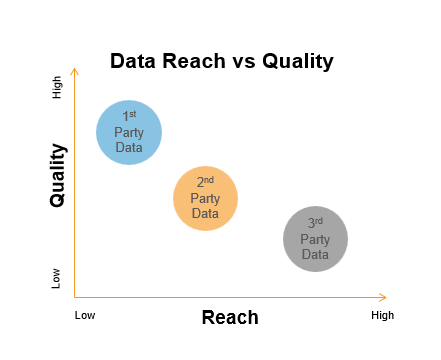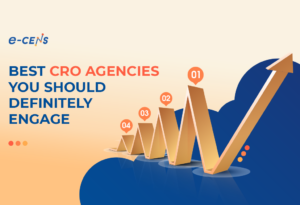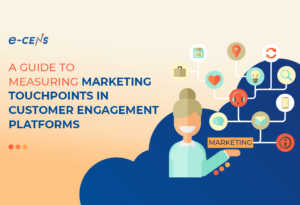Understanding the importance of CDP in Customer Segmentation
Customer segmentation is a crucial area of innovation by companies committed to staying ahead of the competition. One area in which such innovation is legendary is in Digital Marketing and the respective Adtech and Martech ecosystems. These have played a crucial role in targeting web-based audiences. The Customer Data Platform (CDP) enables marketing efforts to be personalized according to your customer segmentation strategies. When advertising is targeted, it has a far more significant impact.
The CDP does not only empower businesses by enabling advanced customer segmentation; this article presents 5 ways companies may use CDPs to personalize their approach and proactively link with their customer base.
How customer data platform can help data governance
Collecting data about your customers is the first step to successful personalized marketing. Doing so has become much more complicated as the regulatory environment around personal information matures. Compliance with the 2018 GDPR forced companies to create a balance between a “Seamless Customer Experience” and “Adhering to the Regulatory Guidelines”. A CDP like Tealium Audience Stream, once fully implemented, allows you to manage the delicate balance of data governance with ease.
As we continue to see an increasing number of high-profile data breaches, brands are recognizing the long term impact these have on Customer Satisfaction (CSAT) along with the huge financial implications. There are two critical factors to consider while tackling these issues:
- Data Inventory
Building a data inventory to understand what personally identifiable information(PII) is stored by the organization, where it is stored, how it is protected, and who has access to it.
- Who has Access to Your Customers Data?
Assess your agency partners to ensure that you are fully informed of the access they have to PII and how they are using the data for marketing and personalization. Review 2nd and 3rd party vendor policies and remove non-compliant vendors.
How to Apply Customer Segmentation to Implement Personalized Emails
Email marketing is a well-established and highly effective way to inform your customers of deals and specials. One of the most impactful outcomes of implementing a CDP is the level to which you are empowered to apply customer segmentation correctly and tailor your email messages to each audience segment according to their interests. Such customizations are not limited to content, personalization strategies also include adapting the font, colors, language, and headlines to truly capture the recipient’s interest.
What is interesting about our current challenges is that in a time of COVID, our marketing teams may even need to reevaluate what time of day they should approach their target segment. Starbucks recently revealed some unusual effects of Working From Home. Their study clearly shows the direct impact on our email communications.
It is clear that customers have different needs, and that segmenting your customer base to create a tailored marketing approach is necessary. This is where a CDP platform can help to boost customer engagement and drive conversions.
How to use Advanced Customer Segmentation Based on Multiple Contacts Across Multiple Channels
A CDP does not rely on a single data point such as a consumer’s email address; it also encompasses various other data sources like:
- First-party data, i.e., Website and Mobile App Behaviour,
- Second-party data, i.e., from publishers and partners of your brand,
- Third-party data, i.e., collated from various aggregators consisting of rich behavioral and demographic data (primarily based on consumer activity on other domains).
Remember – Not All Customer Data Offers the Same Value
Each type of data has its pros and cons in terms of reachability and quality of users. First-party data is the data you collected and own on your site. It usually comes through the site owned first-party cookies or via an app, CRM, etc. However, first-party data has some inherent limitations, and one of them is reach.
First-party data often provides details around transaction history and pages viewed on-site. It may not provide rich information nor have the scale required to make assumptions or reach new audiences. The depth of first-party data is restricted only to the scope of your operations. If you own a food delivery app, your customer data will be limited to the food habits and food choices. This may not be sufficient to make accurate assumptions and create a precise and targeted campaign to increase your customer base.
On the other hand, the reachability is higher when dealing with second- and third-party data as the scope expands to other site domains. This data is generally aggregated from different sources and consists of rich behavioral and demographic data points.
The right mix of these different data points will ensure that the right message is delivered to the right customer at the right time. This methodology will eventually yield greater conversions and support highly-personalized campaigns and content.
A CDP simplifies the process of providing tailored messaging-based templates tuned to customer segmentation and look-alike modeling features such as those provided in Tealium AudienceStream. The real-time targeting acts as the Cherry on the Top for the potential email campaigns.
The data supports the efficacy of such an approach; 68% of consumers say it increases their perception of a brand when companies send them proactive customer service notifications. Customers respond to proactiveness and personalization from their brands and are more inclined to buy well-targeted products.
How to Use CRM to Keep Customer Satisfaction at the Centre
At the heart of every successful company is an efficient and helpful customer service team. They have to deal not only with the general queries but also with any unhappy customer who faced challenges while interacting with the brand (online or offline). However, with so many touchpoints (especially the various social media platforms), it is challenging to ensure that client-care teams have all the customer-relevant information readily available.
Customer relationship management (CRM) systems can be used alongside a CDP platform to provide a comprehensive customer experience and a personalized approach.
Let’s consider a use-case to illuminate the practical aspects of the problem.
Use Case: Banking Account Opening Journey
Outcome: The CDP assists in winning the customer trust back.
As the entire customer activity chain and interactions with the brand are recorded in the CDP’s journey orchestration events, whenever the customer calls the client care, the agent will be able to see the entire experience in real-time. This will ensure that the agent does not ask the same questions and further frustrate the customer.
It will also add a personalized element to the conversation, letting the customer know that the brand is aware of their problem and proactive in fixing it as a priority. In the long run, it might even yield a word-of-mouth recommendation for the brand.
How to Apply Customer Segmentation to Social Media Marketing
Similar to email marketing, Social Media Marketing is another popular way for brands to market their products to their digital audiences. It differs from email as it encourages two-way communication that may influence other customers.
While brands engage with their customers, promote newly launched products, and lead them to their site for increasing conversions. Users share their thoughts and experiences around the brand and their specific products.
It is a common theory that people who are discussing the brands online don’t actually follow the company if they are dissatisfied with that brand. Typically, customers engage with a brand due to dissatisfaction in customer service. Hence they engage on social media to raise their voice. A CDP can help transform this into a mechanism of acquiring followers on social media.
By marrying the PII data with onsite and social media behavior, we can create specific segments in Audience Stream to serve those users on social media with specific offers in line with their needs.
Use Case: Targeting a Potential Customer via Social Media
Outcome: The CDP allows a relevant customer segment to be created for successful personalized marketing.
The strategy in this scenario is to create a segment in the CDP and push a marketing offer in the customer’s Facebook destination promoting Loans on Card (with zero application fees). This will also ensure that the brand channel is followed in the purchase, and the user is treated as a hot lead for marketing teams as they are genuinely interested in the product.
How to Treat Your Premium Customers Differently
Every brand has a niche segment of customers that are considered as “Gold” customers (or the high-net-worth customers in case of financial industries). It is mandatory to treat those customers preferentially as they are a significant revenue source for the brand. Also, a positive word-of-mouth recommendation by such customers can lead to further opportunities.
With the help of a CDP solution and customer segmentation, this special segment of customers can be treated with priority at every touchpoint, starting from onsite personalization to email targeting followed by Search Engine Marketing (SEM) campaigns. This ensures that the personal touch and concierge services are always present on all digital channels.
Part of the customization for premium customers is based on the fact that high-net-worth customers often rate experience over promo offers. This requires that their personalizations be tweaked accordingly, to gain the maximum potential from targeting. Brands can, and should, ensure that these individuals do not have their mailboxes bloated with over-communication at any point in time.
Conclusion
Consumer data can be leveraged in many ways to help a company move forward and improve sales. Good data governance is an essential component of retaining existing customers and attracting new ones. While traditional marketing has its place in establishing the company brand with its customers, there is an increasing need for a more personalized approach to reach an ever-more-sophisticated consumer base.
By using tools such as a Tealium Audiencestream CDP, your company can apply cutting-edge marketing strategies via:
- Advanced customer segmentation
- Targeted email campaigns
- Targeted social media campaigns
- Preferential treatment of ‘Gold’ customers
- Enhanced integrations with your service areas to further improve your customer experience.
Every company is focused on growing both profits and positive exposure for their brand. With a CDP, your company can get the best from its data to leverage a secure and positive future for your business. What is your experience with CDP’s, do you agree with our 5 use cases or do you have a favorite that we did not cover?
Our consultants are here to help you build the right data analytics framework for your needs: contact E-cens today to learn more.
Disclaimer – Declaration of interest
We are not impartial observers of the CDP market and the impact on our customer’s regulatory environment. Here at e-CENS, we are CDP specialists, offering expertise in selecting and tailoring our client’s CDP solutions enabling advanced customer segmentation.
If you are ready to take a deep dive into which CDPs integrate best with your current marketing and technology stacks, contact us. We support the end-to-end cycle of adopting CDPs, from discovery to identifying and implementing the tech stack to support your consumer targeting – and the regular maintenance of these tools.
If you are considering a CDP, see our article on the Key Considerations when Adopting a Customer Data Platform.







